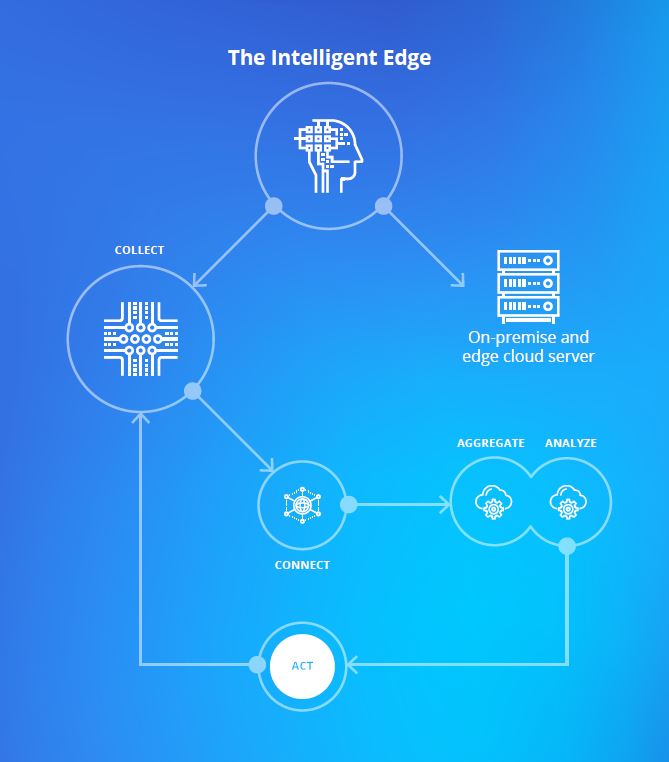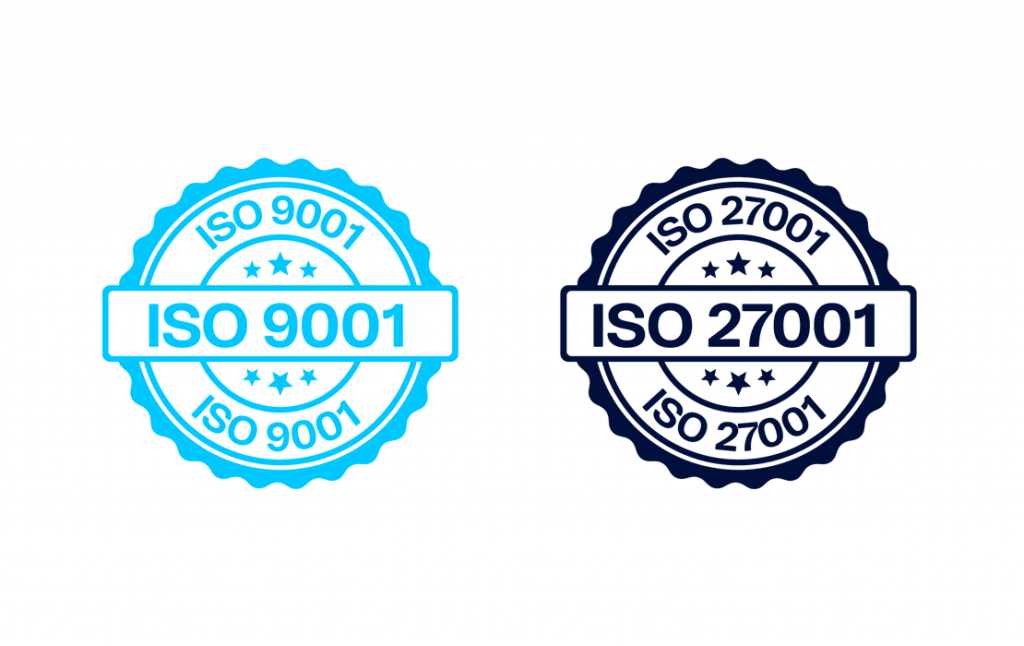AIoT to Emerge as the Defining Enabler of Digital Transformation
Explore the key drivers behind AIoT adoption in 2024 and understand why AIoT is becoming an operational imperative for enterprises seeking to secure their relevance and resilience in the digital age.
A Must for Enterprises in 2024: AI Integration Unlocks the Next Wave of Success of IoT
Global digital transformation continues to accelerate in terms of the pace of change that it brings and the scalability of effects, fundamentally altering how businesses and entire industries operate into the future.
A core element in a successful digital transformation is access to high-quality, real-time data that can be used to make better informed decisions and do more advanced forms of automation for gaining higher operational efficiencies, improving customer experience, and employee productivity. It is therefore unsurprising that one ramification of the digital transformation has been the growth of the Internet of Things. IoT solutions provide enterprises with a reliable means to receive information from a range of connected assets, devices, and equipment – all of which are the core assets of any industrial organization. This correlation between IoT and digital transformation is evident in Omdia’s 2023 IoT Enterprise Omdia survey in which 88% of respondents stated IoT was being implemented in multiple areas of their organization or was a key element in their digital transformation.
Boosted in part by the increased pace of digital transformation, Omdia sizes the worldwide installed base of IoT devices to be almost 38 billion devices at the end of 2023 and that it will eclipse 82 billion in 2030. However, while standalone IoT applications can deliver value they also create challenges. Foremost is the tremendous amount of data they generate and associated challenges of compute, with some estimates stating the global IoT market now accounts for around one billion gigabytes of data daily.
This article is an excerpt from the Telenor IoT Predictions Report, produced in cooperation with Omdia. You can download the entire report for free below!
IoT Predictions 2024: AIoT to Emerge as the Defining Enabler of Digital Transformation
The result is many enterprises end up drowning in a ‘data lake’ as they cannot effectively analyse and extract meaningful information that creates business value from the vast amounts of data. Predictably, this problem only grows as these IoT projects scale and the number of endpoints and data increases.
It’s clear that simply collecting data does not unleash its potential value. Augmenting the data collection with human intelligence to analyse and act upon it is a start, but the sheer amount of information makes this impractical and not even possible. Instead, organizations must infuse their IoT projects with analytical tools that make their applications smarter, more efficient, and more sustainable.
The answer is Artificial Intelligence. As we enter 2024, we believe the integration of AI capabilities into IoT deployments is no longer a luxury. Instead, the Artificial Intelligence of Things will become an operational imperative for enterprises looking to secure their relevance and resilience in the digital age. By doing this, ‘smart devices’ become part of an ‘intelligent system’ solution – a holistic and transformative way to deliver the maximum value added to the organization. Discover the strategies companies can use to leverage AIoT.
AIoT has arrived
What is AIoT (Artificial Intelligence of Things)?
AIoT or AI4IoT is the convergence of AI technologies into an IoT application where IoT represents data and AI – a set of analytical tools that enable extraction of value from data, also commonly termed ‘Internet of Intelligent Things’, ‘IoT with AI’, and ‘IoT Machine Learning’. These terms can be used interchangeably, and each describes an architecture that integrates both technologies in a single solution, a combination that can create a transformative impact.
As seen in the diagram below, the integration of Artificial Intelligence into an IoT deployment can occur at either the edge or in the cloud. The ability of cloud computing to offer scale, flexibility, and power beyond the reach of traditional on-premises equipment has made it the traditional platform for analytics and AI, helping manage vast volumes of data and transform them into impactful insights. Recently though, Edge AI has gained more traction as a way to address low-latency requirements, reduce cost, and mitigate security and privacy concerns.

In either scenario, the essential aim of using Artificial Intelligence is to find patterns in data and run the analysis for extracting meaningful insights for business or automating the tasks, in turn improving decision-making processes. Simply put, AI4IoT enables the conversion of raw data into powerful action with tangible business value. If we do this right, a faster, more robust, and sustainable use of IoT data for value creation can be achieved when deploying most modern data and AI technologies, such as Generative AI.
To put it another way, IoT provides the data while AI furnishes the power to unlock responses. A simple analogy for AI4IoT is the human body. In this scenario, the IoT is the central nervous system, responsible for collecting data and transmitting this information through its network. AI would be the brain; it takes this collected information, analyzes it to determine its importance, and decides how to respond. Although each system has specific functions, they are all interconnected and dependent on one another, and their convergence makes the other more effective.
Edge AI
The Edge AI refers to implementing AI on the physical devices where data is generated, rather than having these capabilities sit in the cloud. Also referred to as Intelligent Edge, Edge IoT, or Edge AI, this is drawing growing interest as we enter 2024. As devices start to generate more data, OEMs and semiconductor vendors are deploying AI models and AI inference chipsets to enable this increased analysis and decision-making at the end point, and also to secure lower latency, data privacy, and security requirements of the applications. This is despite many edge devices typically being constrained by low energy capacity.
The most obvious driver for the growth of the Intelligent Edge is applications that require intense response times, or where latency is vital for the delivery (e.g., AR and VR-enabled gaming). The time it takes for data to be collected, sent to a centralized data center, and back again is simply too long. In addition to the latency advantage, Edge AI allows for improved security and privacy as all the data is kept locally, as well as reducing costs associated with data traffic transfer and subsequent storage in the cloud. The sustainability advantages of relatively lower computational budgets are also prominent.
Watch the Video Now: Telenor and Omdia Predict 2024 As The Year of AIoT
Watch this 17 minute conversation with David Green, Director Consulting at Omdia, Martin Whitlock, CTO at Telenor IoT and Ieva Martinkenaite, SVP and Head of Research and Innovation at Telenor Group.
AI-Enabled IoT: 2024 Is the Time to Act for Enterprises
Omdia believes several factors are set to align in 2024, signaling a pivotal year for IoT with AI adoption. Rapid developments of Generative AI technologies and the associated sense of urgency in the boardrooms of many enterprises show prioritization of AI/ML in IoT deployments, foreshadowing widespread AIoT adoption. In addition to that, hardware advancements with more powerful, tiny, and energy-efficient devices, breakthroughs in AI models, and impending AI regulations setting requirements for more responsible and sustainable use of digital technologies contribute to the momentum. When combined, these conditions underscore the urgency and the window of opportunity for enterprises to integrate AI technologies into their IoT applications to stay ahead.
Competitive Dynamics
In the Omdia IoT Enterprise Survey, over 48% of enterprise respondents stated that AI/ML was a priority for their future IoT deployments; the number one choice. Omdia believes this foreshadows wider AIoT adoption in 2024. Enterprises must make this move or risk falling behind.
Hardware advancements: Integrating Artificial Intelligence capabilities into edge IoT solutions requires greater computing power. Traditionally, a key challenge for this implementation has been getting hardware at the right combination of price, power usage, performance, and form factor. However, strong competition in the semiconductor market has led to tremendous advances in each of these areas in recent years. A large number of silicon vendors already offer an AI acceleration option in price points down to microcontrollers, and those that don’t, are trying to address this gap. Omdia forecasts shipments for AI Edge processors will grow from 2.3bn in 2023 to nearly 4B in 2028.
Breakthroughs in AI research and development: R&D efforts to minimize AI model size will be a key factor in the scalability of applications of AI-enabled IoT applications, in particular for those running at the edge. Model compression, essentially the transformation of a large and complex model into more lightweight models, allows machine learning algorithms to be run on devices with limited memory and power budgets. At times referred to as TinyML, this development will enable increased use of AI in IoT applications in 2024 and beyond.
Generative AI: Any discussion about AI in 2024 will include Generative AI (GenAI). Omdia’s simple definition of GenAI is leveraging AI technology to “create something new”. The content created by GenAI can vary, including conversational or long-form text generation, software code creation, image synthesis, and even music composition.
Omdia research indicates enterprises have enthusiastically embraced generative AI: 38% of respondents in Omdia’s 2024 IT Enterprise Insights reported that they had either already fully adopted generative AI or were implementing it. Only 10% said they had no interest in generative AI.
In these early days, it is difficult to assess how precisely GenAI will impact IoT Machine Learning. One near-term impact could be in automated software code generation. GenAI’s ability to accelerate the coding process could be applied and aid the development of coding IoT applications, helping to reduce the time to market. Another potential convergence of these technologies could be synthetic data generation.
External Factors: A range of other factors are also expected to compel enterprises to move toward IoT with AI in 2024. Labor shortages in high-cost countries will drive more enterprises to utilize automated solutions where possible. Another interesting development in 2024 will be AI regulation, where different government bodies expect to address the impact of Artificial Intelligence and create responsible AI governance frameworks to safeguard against its potential harms (e.g., privacy thefts, disinformation, bias, and discrimination). While at first glance this might seem like a market inhibitor, Omdia surveys show an overwhelming number of enterprises believe government regulations are important for the long-term governance of the space. When asked in an Omdia survey, 65% of enterprise AI practitioners felt that AI should be regulated.
Taken together, these factors are setting up to make 2024 a monumental year for Artificial Intelligence of Things in enterprises. However, as with any technology, the ultimate factor for future success will be the return on investment that Artificial Intelligence of Things projects deliver.
The following use cases exemplify some of the areas where we believe AIoT will, or already does, provide a practical and tangible ROI.
Key AIoT Benefits and AI & IoT Use Cases
Get a Free Consultation




